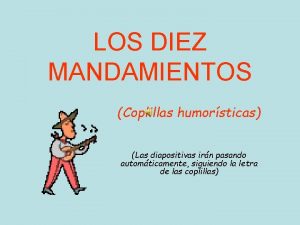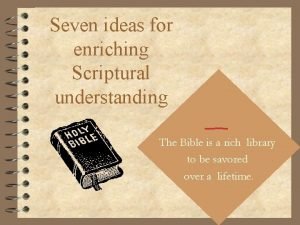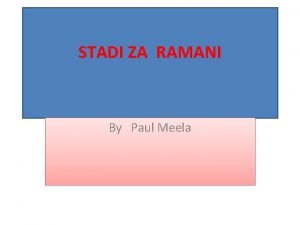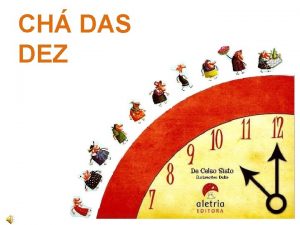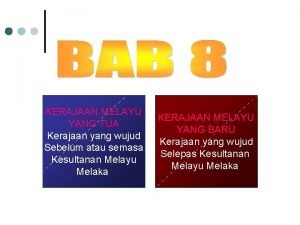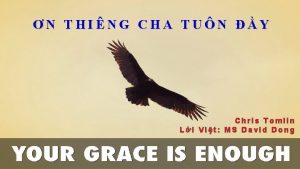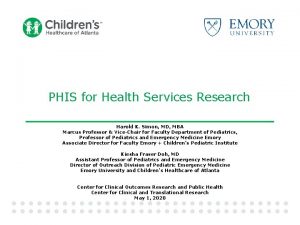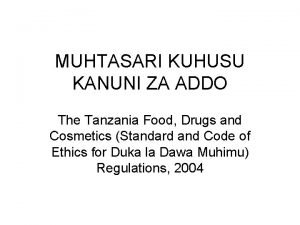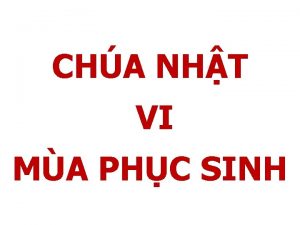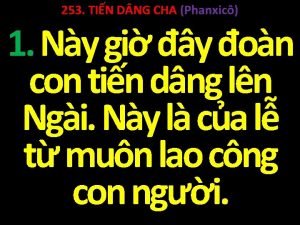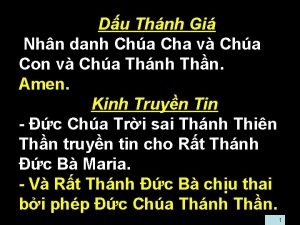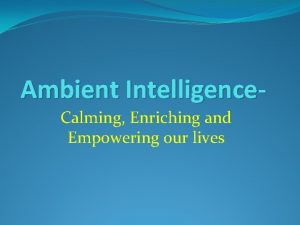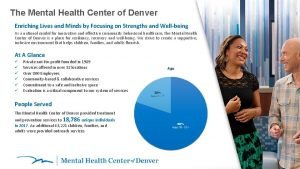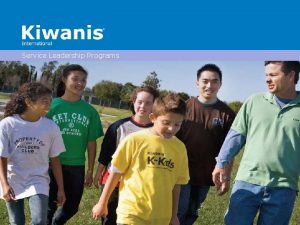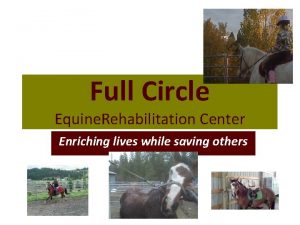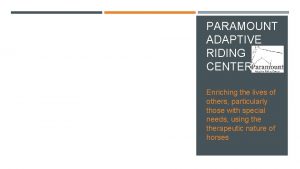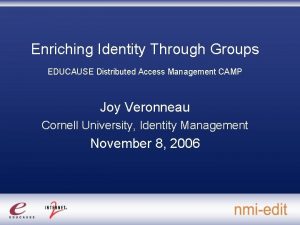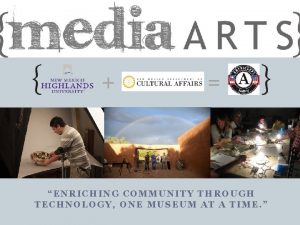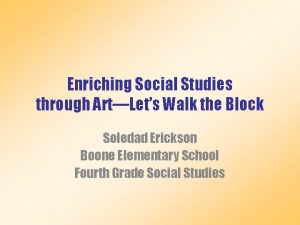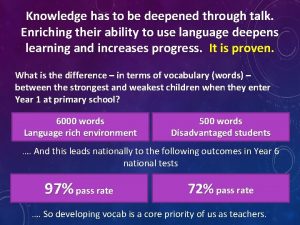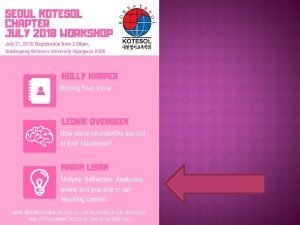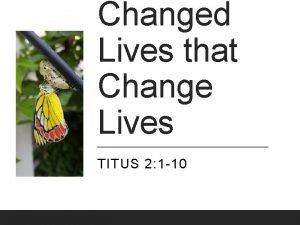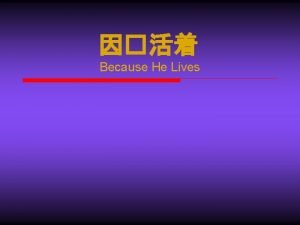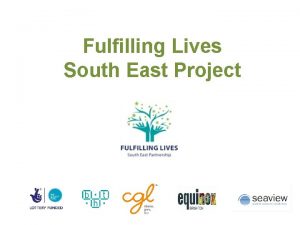DO RE MI CHA CHA Enriching Lives through





























- Slides: 29

DO RE MI, CHA CHA! Enriching Lives through Music & Dance!

DANCE THERAPY "Dance is the hidden language of the soul, of the body" -Martha Graham

What is dance therapy? Dance therapy uses movement to improve mental and physical well-being. Improving ones health, mood and body image while also reducing stress. It is a recognized form of complementary therapy used in hospitals.

How does dance therapy work? ◦ Increases endorphins which create a state of well-being ◦ The movement gets blood flowing and enhances other functions in our bodies including: the circulatory, respiratory, skeletal and your muscular systems. ◦ Helps you to stay physically fit

MUSIC THERAPY "Music is an art that goes well beyond science. Proof can be found in the huge amount of studies that have been carried out throughout the world based on music-therapy and the important results achieved. " -Andrea Bocelli

What is music therapy? ◦ An established health profession that is used within a therapeutic relationships to address physical, emotional, cognitive, and social needs of individuals. It also provides an avenue of communication that is helpful to those who find it difficult to express themselves in words.

How does Music Therapy work? ◦ Improves the quality of a patient's life ◦ Helps with motor and communication skills ◦ Reduces pain, loneliness, and stress ◦ Improves self-esteem

CHILD DEVELOPMENT

Music Therapy ◦ Stimulates all of the senses, and involves the child at many levels ◦ Highly motivating, yet can be calming and relaxing ◦ Helps manage stressful situations or pain ◦ Encourages socialization, selfexpression, communication and motor development Dance Therapy • Uses large motor play, physical regulation, and non-verbal communications • Problem solving skills, and movement games help children thrive physically and mentally. • Music and props are often used to encourage extension of movement and self-expression

Ashon's Song – The Music Therapy Program at Boston Children's https: //www. youtube. com/watch? v=DZm. OEl. I 3 O 2 g

Did you know? The brain processes music in both hemispheres, which stimulates cognitive functions and may be used to help speech and language skills. Studies also show, a half an hour of music training increases the blood flow to the brain's left hemisphere, resulting in higher levels of childhood development.

DEPRESSION

Music Therapy ◦ Music helps release dopamine, the "feelgood" hormone. Dopamine is an integral part of the brain's pleasure enhancing system. ◦ Listening to music reduces stress, on both emotional and molecular levels ◦ Helps individuals develop relationships and address issues they may not be able to address using only words.

Tips to use music with Depression 1. Listen to music that makes you feel good. 2. Use music to enhance other activities. If you enjoy painting, dancing, drawing, writing, or meditating, add music to the activity to heighten the experience. 3. Engage with music. Actively engaging with music helps lifts your mood more effectively than passive listening 4. Create a morning playlist. If you tend to feel rushed or hectic in the morning, consider making a playlist filled of songs that help you feel relaxed and at ease, or that inspire you for your day

CANCER PATIENTS

Music Therapy When used with anitnausea/vomitting medications, patients recieving high does of chemotherapy find it to be effective in easing the physical symptoms of the nausea and vomitting. https: //www. youtube. com/watch? v=gijpp 3 B 4 -y. U It has been found to decrease the level of pain resulting in a decrease of pain medication needed.

TRAUMA INJURIES

Music Therapy Unlike some therapies that focus on specific centers of the brain, music therapy hits them all. Music helps aid our brains in healing itself. This is called neuroplasticity. Music allows us to strengthen the connections and build new connections around where the damage might be The centers that are responsible for movement, language, emotion, and cognition are all activated when we passively listen to music. https: //www. youtube. com/watch? v=EK 5 qq. YYxjn 4

VETERANS

BRAIN INJURY More soldiers have returned home with brain injuries from improvised devices (IEDs). Memory and emotions are affected by brain injuries and they are at increased risk of Parkinson's and Alzheimer's disease. https: //www. youtube. com/watch? v=dy-2 LH 7 qz. VE

PTSD Post Traumatic Stress Disorder When a veteran perceives a threat during a trauma or experieces an episode of PTSD, the nervous system initiates the "fight, flight or freeze" response that overrides physiological changes in sensory aweremess, heart rate, breathing, cortisol and other stress hormone levels. Music and dance therapy can empower our Veterans to use these experiences as a tool for establishing a new found sense of mind-body connection and internal control. It helps to return the nervous system to a state of balance. https: //www. youtube. com/watch? v=kym. Jhze. Id. KY

ALZHEIMERS

With Alzheimer's, people lose their capacity to have interactions. According to the Alzheimer's Foundation of America, "When used appropriately, music can shift mood, manage stress-induced agitation, stimulate positive interactions, facilitate cognitive function, and coordinate motor movements. https: //www. youtube. com/watch? v=l. Vs. LUVHe 6 Zw

Did You Know? People with dementia-related disorders such as Alzheimer's experience anxiety, frustration and fear, along with physical changes, as memory loss progresses. Both music and dance offers the right brain stimulation for patients with Alzheimer's. What you hear, see and do during dance and music helps to enhance the memory, offers brain stimulation. Not only can you hear the music and dance to the beat, but can see others taking part which offers visual stimulation to the brain. Additionally, when having fun, it brings back memories from younger years which can help improve long-term memory

AUTISM SPECTRUM DISORDER

Music therapy can enable those without verbal language to communicate, participate and express themselves nonverbally. Very often music therapy also assists in the development of verbal communication, speech, and language skills. The interpersonal timing and reciprocity in shared play, turn -taking, listening and responding to another person are augmented in music therapy with children and adults with autism to accommodate and address their styles of communication. https: //www. youtube. com/watch? v=w 1 VZXb. JCk. CE

Did you know? Music therapy research demonstrates that individuals with autism may show equal or superior abilities in pitch processing, labeling of emotions in music, and musical preference when compared to typically developing peers.

al fine & Take a Bow! The world of Music and Dance Therapy continues to grow! But, you don't need a therapist to add music and dance to your daily life! So, get out there and make some music and CHA!

REFERENCES While there may not be certified therapist in your area yet, you can go to these websites for assistance. The American Music Therapy Association https: //www. musictherapy. org The American Dance Thearpy Association https: //adta. org/
 Septimo sefirot
Septimo sefirot Ways of enriching the bible understanding
Ways of enriching the bible understanding Cowboy cha cha line dance
Cowboy cha cha line dance My mother twisted through and through
My mother twisted through and through Through one man sin entered the world, and through one man
Through one man sin entered the world, and through one man Class 2 furcation
Class 2 furcation Tangential sawing
Tangential sawing Tôi tin kính một thiên chúa là cha toàn năng
Tôi tin kính một thiên chúa là cha toàn năng Alama za ramani na maana zake
Alama za ramani na maana zake Lela festa
Lela festa Xin giấu con nơi cánh tay cha
Xin giấu con nơi cánh tay cha Amigas velinhas
Amigas velinhas Cha de cravo de defunto
Cha de cravo de defunto Mu cha
Mu cha Historia ya yohana wa patimo
Historia ya yohana wa patimo Kerajaan melayu yang wujud sebelum kerajaan melayu melaka
Kerajaan melayu yang wujud sebelum kerajaan melayu melaka Vào trong nơi thiêng liêng nơi chí thánh cha
Vào trong nơi thiêng liêng nơi chí thánh cha Cha phis
Cha phis Gdr terra cha
Gdr terra cha Addo in tanzania
Addo in tanzania Titolazione
Titolazione Tôi vui mừng tiến bước về nhà cha
Tôi vui mừng tiến bước về nhà cha Giang bai
Giang bai Này giờ đây đoàn con tiến dâng lên ngài
Này giờ đây đoàn con tiến dâng lên ngài Cha hui ju
Cha hui ju Tình cha bao la
Tình cha bao la Lạy cha xin tha cho họ
Lạy cha xin tha cho họ Caha cha slide
Caha cha slide Kinh vực sâu kinh bởi trời
Kinh vực sâu kinh bởi trời Yeup cha gi means
Yeup cha gi means
